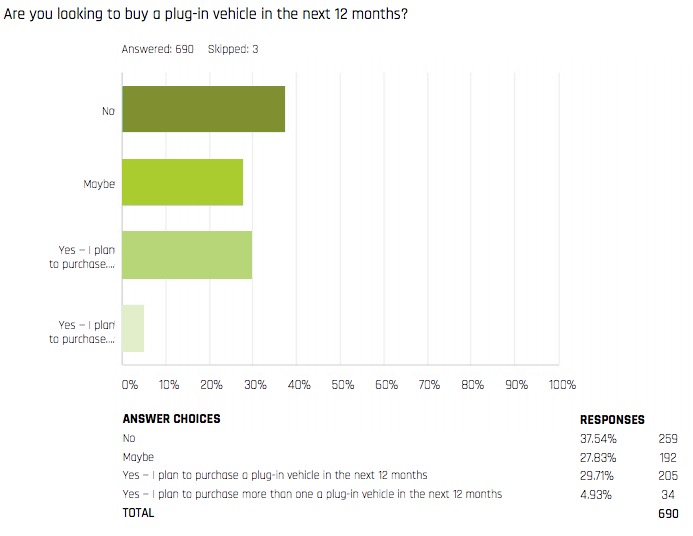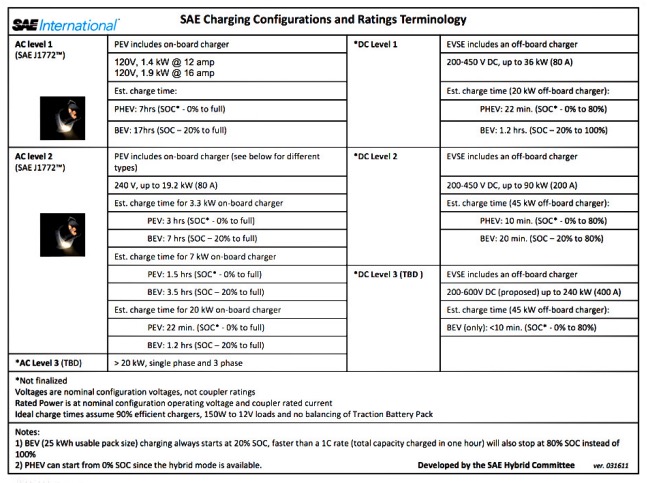CLEANTECHNICA
Executive Summary
 Plug-in vehicle charging is a critical link in the journey towards electrified personal transportation. Every new plug-in vehicle sold requires a means of charging the vehicle. The majority of this infrastructure is installed at the residence, and while the underlying electrical infrastructure is largely in place, the hardware required to actually plug cars into that infrastructure to charge — electric vehicle service equipment (EVSE)* — simply does not exist in many places today.
Plug-in vehicle charging is a critical link in the journey towards electrified personal transportation. Every new plug-in vehicle sold requires a means of charging the vehicle. The majority of this infrastructure is installed at the residence, and while the underlying electrical infrastructure is largely in place, the hardware required to actually plug cars into that infrastructure to charge — electric vehicle service equipment (EVSE)* — simply does not exist in many places today.
This report looks at the current state of the plug-in vehicle charging landscape within the context of the broader transition from internal combustion vehicles to plug-in vehicles. EVSE deployments and sales largely track with the sales of plug-in vehicles, so we will briefly touch on the broader transition to plug-in battery electric vehicles and how the transition is progressing around the world to set the stage for the EVSE discussion.
The report looks at the disruptive innovation taking place in the EVSE space and discusses the promise to not only improve EVSE consumer options but also have a profound impact on the electric grid of the future.
The report then breaks out the current and future projected states of residential plug-in vehicle charging and the transformational potential of workplace charging as a demand response tool for utilities. It then discusses the challenges and solutions of installing EVSEs in multi-family housing complexes.
The report closes with a look at dominant regions around the world that have paved the way forward with high adoption rates of plug-in vehicles and what lessons can be learned from these frontrunners in the journey.
Chapter 1: Plug-in Vehicle Adoption
The pace of plug-in vehicle sales continues to ramp up, with 2017 on track to be the first year seeing more than 1 million plug-in vehicles sold globally.
More importantly, these sales are coming from a wide range of manufacturers spanning all major automotive markets and across a growing number of vehicle classes. Of our survey respondents, 30% shared that they expected to buy one plug-in vehicle in the next 12 months and another 5% noting that they expected to buy more than one plug-in vehicle in the next 12 months. 28% of respondents were on the fence and responded “Maybe”.
Plug-in Vehicle Sales Increasing Rapidly
BYD and Tesla are each on track to sell more than 100,000 vehicles in 2017 as they race to ramp up production to meet growing demand. China, Europe, and the United States continue to lead the globe in plug-in vehicle sales, supported by a combination of tighter regulations governing emissions and incentives on plug-in vehicles.
Looking at the vehicles gaining traction with consumers, 46% of readers surveyed who were planning to purchase a plug-in vehicle in the next 12 months were planning to purchase a Tesla. With Tesla and the Model 3 having such pent-up demand, it should come as no surprise that Tesla comes out on top. Chevrolet came in second place at 13%, with its Bolt battery electric vehicle and Volt plugin hybrid vehicle generating a lot of interest, followed by Nissan at 12%. The list tails off from there, with BMW, Volkswagen, Toyota, and Kia following the top three.
Plug-in Vehicle Charging Speeds
As context for this report, a grounded understanding of plug-in vehicle charging speeds is crucial to understanding the role EVSEs will play in the transition to mass adoption of plug-in vehicles moving forward. Charging speeds are split into three official levels of charging as detailed in the SAE Charging Configurations and Ratings Terminology document.
Utilizing an Alternating Current (AC) EVSE, which includes the vast majority of Level 1 and Level 2 EVSE, requires the plug-in vehicle to have an onboard charger to convert the incoming AC power to Direct Current (DC). Thankfully, plug-in Plug-in Vehicle Charging Speeds vehicle manufacturers know this and have built the charger into their vehicles.
Conversely, for a vehicle to support DC charging, the manufacturer must wire the vehicle specifically to accommodate DC charging. This is typically accomplished through the addition of a separate charging port like the CHAdeMO and CCS Combo fast-charging ports. Naturally, adding a port costs extra money, so most automotive manufacturers charge extra to have the optional DC charging port included (instead of a standard-offering version of the car without the fast-charging port).
About CleanTechnica
cleantechnica.com
“CleanTechnica is the #1 cleantech-focused website in the US and the world. Our work has been referenced by the New York Times, Washington Post, Slate, MSNBC, Think Progress, Reuters, Scientific American, and plenty of other media outlets. Some of the cleantech industry’s top CEOs, directors, founders, and board members read us regularly. And plenty of “common citizens” are also addicted to our site.”
Tags: CleanTechnica, Electric Vehicle Service Equipment, Electric Vehicles, EVs, EVSE, Plug-in Electric Vehicles, SAE, SAE International







 RSS Feed
RSS Feed